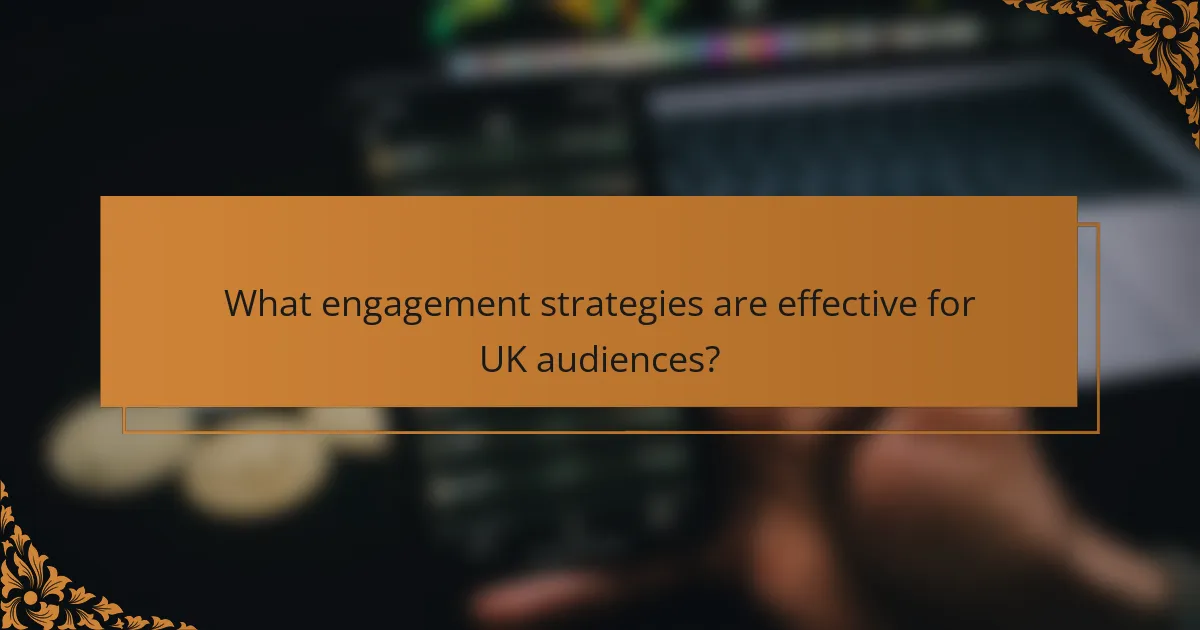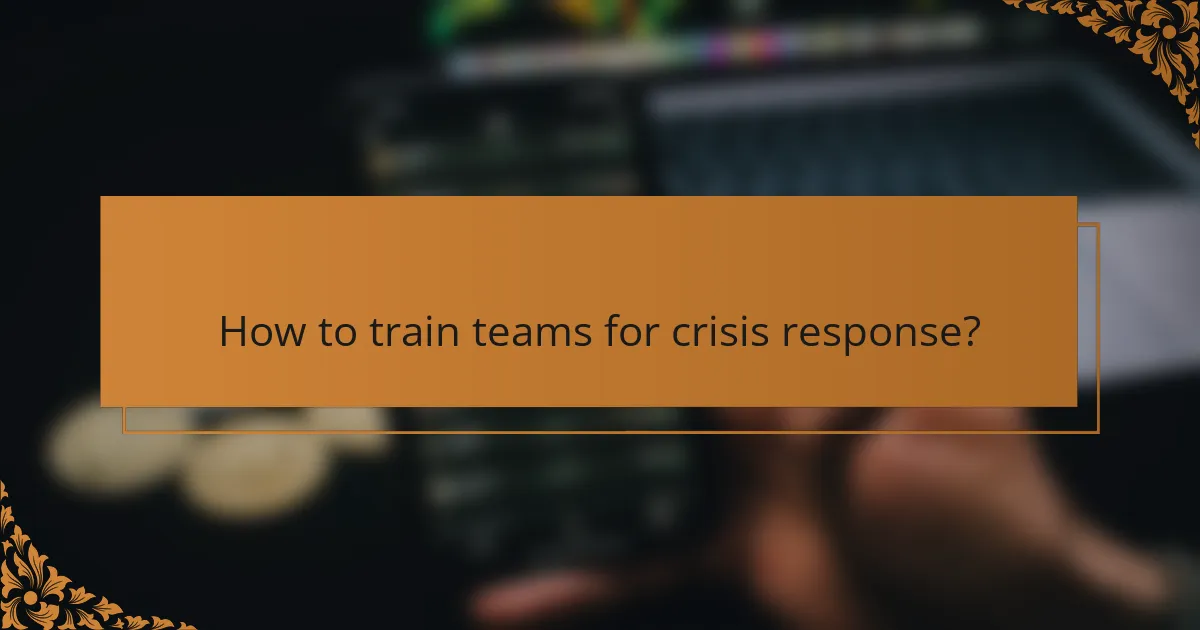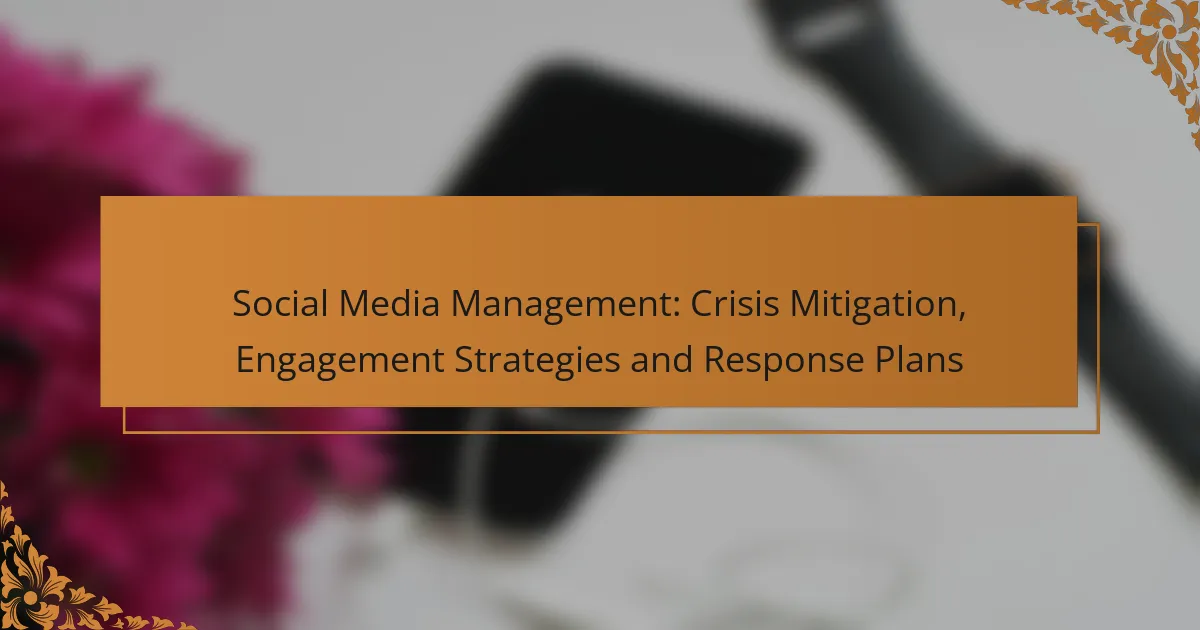In today’s digital landscape, effective social media management is crucial for organizations to navigate crises and maintain their reputation. By implementing proactive engagement strategies and developing comprehensive response plans, businesses can swiftly address negative events while fostering positive interactions with their audience. Tailoring content to resonate with local audiences further enhances connection and trust during challenging times.

How can social media management mitigate crises in the UK?
Social media management can effectively mitigate crises in the UK by enabling organizations to respond swiftly and strategically to negative events. By employing proactive strategies and real-time frameworks, businesses can maintain their reputation and engage positively with their audience during challenging times.
Proactive monitoring strategies
Proactive monitoring involves continuously tracking social media channels for potential issues before they escalate into crises. This can include setting up alerts for brand mentions, monitoring sentiment analysis, and keeping an eye on trending topics that may affect the organization.
Utilizing tools like Hootsuite or Sprout Social can help streamline this process, allowing businesses to respond quickly to emerging concerns. Regularly reviewing analytics can also provide insights into audience sentiment and emerging trends.
Real-time response frameworks
A real-time response framework is essential for addressing crises as they unfold. This includes having a clear communication plan that outlines roles, responsibilities, and key messages for team members involved in crisis management.
Establishing a dedicated crisis management team can facilitate quick decision-making and ensure that responses are consistent across all platforms. Utilizing templates for common scenarios can also save time and ensure a unified response.
Case studies of successful crisis management
One notable example is the response by a UK airline during a major operational disruption. By quickly addressing customer concerns on social media and providing regular updates, they managed to maintain customer trust and satisfaction despite the challenges.
Another example involves a well-known food brand that faced a product recall. Their proactive communication strategy included timely updates on social media, which helped to mitigate negative sentiment and reassure customers about safety measures taken.

What engagement strategies are effective for UK audiences?
Effective engagement strategies for UK audiences focus on creating relevant content, fostering community interaction, and leveraging local influencers. Tailoring your approach to resonate with cultural nuances and preferences can significantly enhance audience connection.
Targeted content creation
Targeted content creation involves developing material that speaks directly to the interests and needs of specific audience segments. In the UK, this might mean addressing local events, trends, or issues that resonate with your followers.
Consider using data analytics to identify what topics are currently trending among your audience. For instance, creating content around popular UK sports events or seasonal festivities can drive higher engagement rates.
Utilizing user-generated content
User-generated content (UGC) is a powerful way to engage audiences by showcasing their contributions. Encouraging followers to share their experiences with your brand can foster a sense of community and authenticity.
In the UK, running campaigns that invite users to submit photos or stories related to your products can create a vibrant online community. Highlighting this content on your social media platforms not only boosts engagement but also builds trust with potential customers.
Leveraging influencers for engagement
Leveraging influencers involves collaborating with individuals who have a strong following in your target market. In the UK, partnering with local influencers can help amplify your message and reach a wider audience.
When selecting influencers, consider their alignment with your brand values and audience demographics. Micro-influencers, who often have more engaged followers, can be particularly effective in niche markets. Aim for partnerships that feel authentic and resonate with your audience to maximize engagement.

How to develop a social media response plan?
To develop a social media response plan, start by identifying potential crises and outlining clear procedures for addressing them. A well-structured plan enables organizations to respond swiftly and effectively, minimizing damage and maintaining public trust.
Step-by-step response plan creation
Begin by assessing your organization’s vulnerabilities and the types of crises that could arise. Engage key stakeholders to gather insights and create a comprehensive list of potential scenarios. Next, establish a timeline for response actions, detailing who is responsible for each step.
Once you have identified potential crises, draft specific responses for each scenario. This should include pre-approved messaging, designated spokespersons, and a communication timeline. Regularly review and update the plan to reflect changes in your organization or social media landscape.
Key components of an effective response plan
An effective response plan should include clear communication protocols, designated roles, and a monitoring system to track social media activity. Ensure that all team members understand their responsibilities and have access to the necessary resources.
Incorporate a feedback loop to evaluate the effectiveness of your responses after a crisis. This can involve analyzing engagement metrics, public sentiment, and media coverage. Regular training sessions can help prepare your team for real-time execution of the plan.

What tools enhance social media crisis management?
Effective social media crisis management relies on specialized tools that facilitate monitoring, engagement, and response scheduling. Utilizing the right platforms can significantly improve your ability to manage crises swiftly and efficiently.
Hootsuite for monitoring
Hootsuite is a powerful tool for monitoring social media channels in real-time. It allows users to track mentions, keywords, and hashtags across multiple platforms, enabling quick identification of potential crises.
By setting up custom streams, teams can prioritize alerts based on urgency, ensuring that critical issues are addressed promptly. For example, monitoring brand mentions can help detect negative sentiment before it escalates.
Sprout Social for engagement
Sprout Social excels in facilitating engagement during a crisis. Its features enable teams to respond to comments and messages efficiently, ensuring that customer concerns are addressed in a timely manner.
With its robust reporting tools, users can analyze engagement metrics to understand audience sentiment and adjust their communication strategies accordingly. This adaptability is crucial for maintaining trust during challenging times.
Buffer for scheduling responses
Buffer is an excellent tool for scheduling responses to social media posts, which is vital during a crisis. By planning responses in advance, teams can ensure consistent messaging and avoid knee-jerk reactions.
Setting up a content calendar allows for a strategic approach to communication, helping to maintain a steady flow of information. This can be particularly useful when addressing a crisis over several days or weeks, as it keeps the audience informed without overwhelming them.

What metrics measure the success of engagement strategies?
Success in engagement strategies can be measured through various metrics that reflect audience interaction and sentiment. Key metrics include engagement rates, sentiment analysis, and overall reach, which provide insights into how well the audience is connecting with the content.
Engagement rate analysis
Engagement rate analysis involves calculating the level of interaction that users have with content, typically expressed as a percentage. This metric can include likes, shares, comments, and other forms of interaction relative to total followers or impressions.
To calculate engagement rate, use the formula: (Total Engagements / Total Followers) x 100. A healthy engagement rate typically ranges from 1% to 5%, depending on the platform and industry. Monitoring this metric helps identify what content resonates most with your audience.
Common pitfalls include focusing solely on follower count rather than interactions. Instead, prioritize quality engagement over quantity to foster a loyal community.
Sentiment analysis tools
Sentiment analysis tools evaluate the emotional tone behind social media interactions, providing insights into how audiences feel about a brand or topic. These tools use natural language processing to categorize sentiments as positive, negative, or neutral.
Popular sentiment analysis tools include Brandwatch, Hootsuite Insights, and Sprout Social. These platforms can help track changes in audience sentiment over time, allowing for timely adjustments in engagement strategies. Regularly assessing sentiment can guide content creation and crisis management efforts.
When using sentiment analysis, be cautious of context and sarcasm, which can skew results. It’s beneficial to combine quantitative sentiment data with qualitative feedback for a comprehensive understanding of audience perceptions.

How to train teams for crisis response?
Training teams for crisis response involves equipping them with the skills and knowledge to handle emergencies effectively. This includes understanding communication protocols, decision-making processes, and the importance of rapid response in mitigating potential damage.
Workshops on crisis communication
Workshops focused on crisis communication are essential for preparing teams to convey clear and accurate messages during emergencies. These sessions should cover key topics such as message framing, audience analysis, and the use of various communication channels.
Incorporate role-playing exercises to simulate real-life scenarios, allowing participants to practice their skills in a controlled environment. This hands-on approach helps reinforce learning and builds confidence in team members.
Simulation exercises for real-life scenarios
Simulation exercises provide teams with the opportunity to experience crisis situations in a realistic setting. These exercises should mimic potential crises relevant to the organization, such as data breaches or public relations disasters.
During simulations, teams can practice their response plans, assess their effectiveness, and identify areas for improvement. Regularly scheduled drills can enhance preparedness and ensure that team members remain familiar with their roles and responsibilities.
